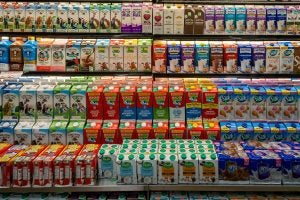When it comes to overlapping terminology of plant-based products and traditional, animal products, there’s been a lot of division among stakeholders. You know: plant-based meat, vegan leather, milk, you get the gist. The Textile Exchange’s step toward defining leather products as animal products may signal further momentum toward a division in how plant and animal products are dubbed.
There are a lot of consumer choices in the United States, and while some groups are arguing for free speech, concerns about how products are labeled come down to integrity. Even the Plant-Based Products Council is concerned about the “greenwashing” of their products. And, recent lawsuits accusing Beyond Meat of false protein claims further press the issue of a need for clear, concise, accountable, product representation.
In a statement to membership, the nonprofit Textile Exchange has defined leather as a hide or skin with its original fibrous structure and tanned so it does not rot. Additionally, these materials may have hair or wool attached (or not) and may be split into layers or segments before or after tanning.
The statement says, “Materials that do not meet the definition above will not be described by Textile Exchange as leather, regardless of any past designation or common usage of the term. ”
Could this be an indicator for linguistic terms such as meat and milk? Maybe. The brief continues:
“There is currently a gap in the legal framing of the classification and naming of the diverse materials sold as alternative materials to leather. This leads to misleading labeling where a fossil-based synthetic material could be referred to in the same way as an innovative plant-based material, making it difficult for a consumer to differentiate the two.
We’re encouraging policymakers to close this gap. For now, these diverse manmade materials, fully or partially plant-based will be grouped in the ‘Manmade non-fiber materials’ category of our reports and programs until further legal guidance on the naming and categorization of these materials is available.”
Where’s plant-based ‘meat’ labeling at?
When it comes to other plant-based nomenclature, there’s been some progress in reaching legal definitions over the years. Missouri passed a law in 2018 forbidding the misrepresentation of products as meat that is not derived from harvested production livestock or poultry. In 2019, 24 other states attempted to follow suit. Kansas approved SB 261 in May of this year, a bill that requires a prominent and conspicuous disclaimer to be included on the labels of plant-based products labeled with traditional meat terms. France became the first European country earlier this year to ban words that have traditionally been used to describe meats from being used for their meatless counterparts.

What about plant-based ‘milk’?
The FDA defines milk as an animal product. Just this year, the FDA opened up commenting on a draft policy that may take the word “milk” off of labels that do not contain animal products. No final call has been issued yet — because the labeling of products is a tough issue.


